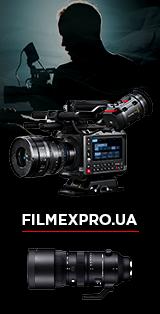Lighting is the most critical factor that can make or ruin your portrait photography shots. Whether you’re a passionate or a professional photographer, learning the art of lighting can significantly improve your portraiture. Registering for a Photography Course can help you improve your ability to capture striking pictures and gain essential insights and ways to manage lighting.
 In this blog, we’ll look at various Photography Lighting options, methods, and advice to help you produce gorgeous photographs that perfectly convey the personalities of your subjects.
In this blog, we’ll look at various Photography Lighting options, methods, and advice to help you produce gorgeous photographs that perfectly convey the personalities of your subjects.
Understanding the Importance of Lighting
Light plays a crucial role in portrait making, setting the mood and tone of a picture. It determines the intensity and shade of colours, the field depth, and the feeling a viewer develops toward the captured material. As considered by the artist, light can also be applied to stress certain areas, alert, or provide depth by shading some areas to complement the feel. Knowing how to control light also means taking an intermediate photograph and turning it into an attractive artwork.
Types of Lighting
Before going into approaches, it’s critical to comprehend the various lighting configurations frequently employed in portrait photography:
Natural Light
Sunlight that reaches a scene unaltered by artificial means is known as natural light. It is highly regarded for its warmth and tenderness, making it an excellent portraiture option. The golden hour, just after sunrise or before sunset, offers lovely, diffused lighting that can improve skin tones and give your photos a dreamlike feel.
Artificial Light
Flashlights, strobes, continuous lights, and other light sources are examples of artificial illumination. With these, photographers can adjust the light’s strength, direction, and quality. Even though natural light can produce breathtaking effects, artificial light offers greater versatility, particularly for indoor or nighttime photography.
Mixed Lighting
Mixed lighting involves combining artificial and natural light sources. Although this method can produce interesting results, it must be carefully balanced to prevent sharp contrasts or hue shifts.
Lighting Techniques for Stunning Portraits
After discussing the many kinds of lighting, let’s examine some methods for becoming an expert in photographing lighting for portraiture.
Experiment with Natural Light Sources
When taking photos outside, seek natural light sources, such as backlighting, reflectors, or even open shade. Soft, uniform light from an open shade source lessens harsh shadows. Ascertain that your subject receives adequate light and place them close to a shaded spot. This produces a gentle, attractive appearance that’s perfect for portraiture.
Utilise Softboxes and Diffusers
If you’re using artificial lighting, consider employing diffusers or softboxes. By distributing the light across a greater region, these technologies soften sharp shadows and produce a more appealing appearance. To ensure uniform light distribution, position your diffuser or softbox at a 45-degree angle with respect to your subject.
Play with Shadows
Shadows may give your portraits more depth and impact. Play around with the angle and distance of your light source to create soft and harsh shadows. For example, placing your light source closer to the subject can result in sharper shadows, heightening the dramatic impact. On the other hand, if you move it farther away, the shadows will be softer and appear more natural.
Use Natural Reflectors
Light can be reflected onto your subject using natural reflectors, such as white walls or light-coloured surfaces. This approach gives your portraits a shine and softer shadows. To improve your lighting when shooting outside, seek out spots with built-in reflectors, such as light-coloured or sandy terrain.
Consider the Mood
Your choice of lighting can significantly impact how your portraits feel. Hard, directed light can create drama or tension, but soft, diffused light usually exudes a serene, peaceful vibe. Consider the narrative you wish to convey with your portrait and modify the lighting appropriately.
Tips for Effective Lighting
- Test and Adjust: Don’t be afraid to try new things. Adjust your lighting setup and take test images until you get the desired result.
- Know Your Gear: Get acquainted with your lighting and camera gear. Understanding how your equipment functions will help you make well-informed quick judgements.
- Keep It Simple: Often, less really is more. When used properly, a single light source can produce amazing effects.
- Practice: It is the key to mastering lighting, like any other talent. Try several methods and environments to see what best suits your style and needs.
Conclusion
Becoming proficient in lighting is essential for breathtaking portraits and it requires trial, error, creativity, and practice. You can elevate your portrait photography by exploring different lighting types, using practical techniques, and focusing on the desired emotion. Whether working with artificial or natural light, staying flexible and open to new ideas is essential. Many aspiring photographers learn from free resources provided by The Knowledge Academy to enhance their skills. So, grab your camera and start capturing stunning images!

